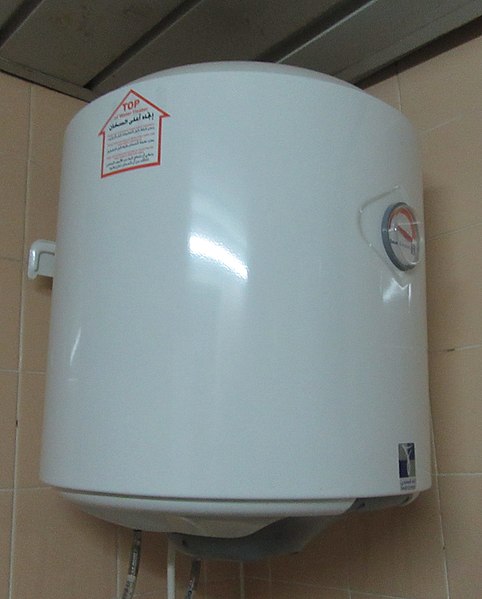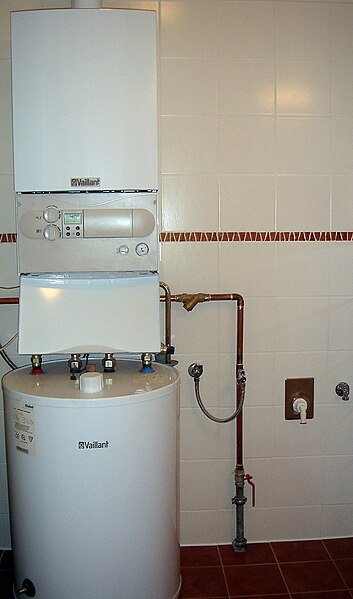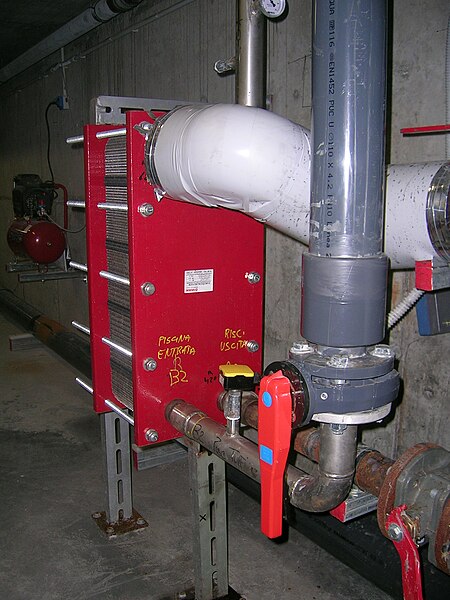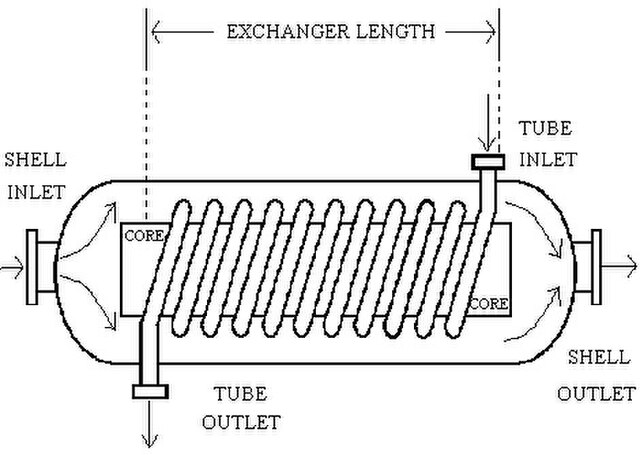Water heating is a heat transfer process that uses an energy source to heat water above its initial temperature. Typical domestic uses of hot water include cooking, cleaning, bathing, and space heating. In industry, hot water and water heated to steam have many uses.
A small tank water heater
Electric-tank–type storage water heater (US)
Gas furnace (top) and storage water heater (bottom) (Germany)
The inside of a hydraulically operated two-stage tankless heater, heated by single phase electric power. The copper tank contains heating elements with 7.2 kW maximum power.
A heat exchanger is a system used to transfer heat between a source and a working fluid. Heat exchangers are used in both cooling and heating processes. The fluids may be separated by a solid wall to prevent mixing or they may be in direct contact. They are widely used in space heating, refrigeration, air conditioning, power stations, chemical plants, petrochemical plants, petroleum refineries, natural-gas processing, and sewage treatment. The classic example of a heat exchanger is found in an internal combustion engine in which a circulating fluid known as engine coolant flows through radiator coils and air flows past the coils, which cools the coolant and heats the incoming air. Another example is the heat sink, which is a passive heat exchanger that transfers the heat generated by an electronic or a mechanical device to a fluid medium, often air or a liquid coolant.

Partial view into inlet plenum of shell and tube heat exchanger of a refrigerant based chiller for providing air-conditioning to a building
Shell and tube heat exchanger
An interchangeable plate heat exchanger directly applied to the system of a swimming pool
Helical-Coil Heat Exchanger sketch, which consists of a shell, core, and tubes (Scott S. Haraburda design)








